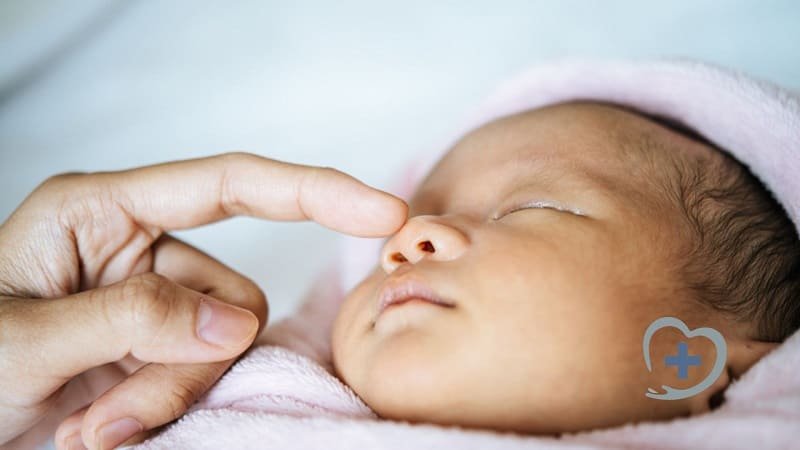Introduction:
Bringing a newborn into your life is a joyous journey, but along with the wonders of parenthood comes the responsibility of ensuring your baby’s health and safety. Aspiration pneumonia in babies is a common concern for many parents, but with the right knowledge and precautions, you can significantly reduce the risk. In this detailed guide, we’ll explore effective strategies to prevent aspiration pneumonia in babies, placing a strong emphasis on creating a safe environment and providing attentive care.
Understanding Aspiration Pneumonia:
Aspiration pneumonia occurs when foreign objects, such as food, liquids, or even saliva, are inhaled into the lungs, leading to infection and inflammation. In babies, who are still mastering the art of swallowing and breathing coordination, the risk is heightened. Let’s delve into proactive steps to create a safe environment and minimize the risk:
How to Prevent Aspiration Pneumonia in Babies
Optimal Positioning During Feeding:
- Ensure your baby is in an upright position while breastfeeding or bottle-feeding. Hold them at a slight incline, leveraging gravity to assist in the safe passage of liquids down the esophagus.
Choosing the Right Bottles and Nipples:
- Opt for bottles with slow-flow nipples, mimicking the natural pace of breastfeeding and reducing the likelihood of your baby gulping down too much milk at once. Experiment with different nipple shapes to find the one that promotes a comfortable and controlled feeding pace.
Gradual Introduction of Solid Foods:
- When transitioning to solid foods, start with purees and finely mashed textures before progressing to chunkier options. This gradual introduction helps your baby adapt to new textures and reduces the risk of choking or aspiration.
Supervised Mealtime for Prevention:
- Always be present and attentive during your baby’s mealtime. Avoid distractions like electronic devices, and focus on the feeding process to quickly address any signs of distress or difficulty swallowing.
Adhering to Safe Sleep Practices:
- Position your baby on their back for sleep, following the American Academy of Pediatrics (AAP) guidelines. This not only reduces the risk of aspiration during sleep but also provides a secure sleeping environment.
Maintaining a Clean Environment:
- Regularly clean and inspect baby equipment, including toys, playpens, and high chairs, to ensure they are free from small objects or loose parts that could pose a choking hazard.
Recognition and Prompt Response to Signs of Respiratory Distress:
- Familiarize yourself with the signs of respiratory distress, such as persistent coughing, wheezing, or difficulty breathing. Swiftly seeking medical attention if you observe any of these signs is crucial.
Staying Informed About CPR:
- Taking a CPR course can provide essential skills in emergencies. Knowledge of how to respond quickly and effectively can significantly impact the outcome for your baby.
Conclusion:
As parents, our utmost priority is the well-being of our children, and preventing aspiration pneumonia is a crucial aspect of ensuring their health and safety. By adopting these preventative measures and staying informed, you can create a secure environment for your baby to thrive. Early intervention and a vigilant eye are key to reducing the risk of aspiration pneumonia in babies. Let’s work together to nurture a safe and healthy start for the newest members of our families.
Faq Relating to " How to Prevent Aspiration Pneumonia in Babies "
Aspiration pneumonia in babies occurs when foreign objects, such as food or liquids, are inhaled into the lungs, leading to infection and inflammation. Due to their developing coordination between swallowing and breathing, babies are at an increased risk. The potential risks include respiratory distress, infection, and inflammation.
Position your baby in an upright posture while breastfeeding or bottle-feeding. Holding them at a slight incline allows gravity to aid in the safe passage of liquids down the esophagus, reducing the risk of aspiration.
Opt for bottles with slow-flow nipples, emulating the natural pace of breastfeeding. This choice reduces the likelihood of your baby consuming excessive milk at once. Experiment with different nipple shapes to find the one that promotes a comfortable and controlled feeding pace.
Begin with purees and finely mashed textures when introducing solid foods to your baby. This gradual approach helps them adapt to new textures and minimizes the risk of choking or aspiration.
Yes, signs of respiratory distress include persistent coughing, wheezing, or difficulty breathing. Be attentive during your baby’s mealtime and seek prompt medical attention if you observe any of these signs.
Absolutely. Position your baby on their back during sleep, adhering to the guidelines provided by the American Academy of Pediatrics (AAP). This not only reduces the risk of aspiration during sleep but also ensures a safe sleeping environment.
Regularly clean and inspect baby equipment, including toys, playpens, and high chairs, to ensure they are free from small objects or loose parts that could pose a choking hazard.
While not a direct prevention method, having CPR knowledge can be crucial in emergencies. Being equipped with the skills to respond quickly and effectively can significantly impact the outcome for your baby.
Yes, you can continue breastfeeding while taking necessary precautions. Ensure your baby is in an upright position during feeding to minimize the risk of aspiration.
Regularly monitor your baby for signs of respiratory distress, especially during and after meals. If you notice any persistent symptoms such as coughing, wheezing, or difficulty breathing, consult with a healthcare professional promptly.








